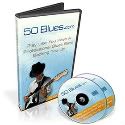So you've chosen to take up the guitar. Good for you! Now comes the hard part: which guitar is the best to start playing on? Well, the answer to that question depends on many things. It depends on what kind of music you enjoy listening to, what kind of music you are looking to play, and what kind of level you wish to reach--amateur or professional.
Before we go over each topic, let us first discuss the differences between Electric and Acoustic guitars.
The main difference between an Electric and Acoustic guitar is the fact that the Electric must be plugged into an amplifier in order to be heard loudly, while the Acoustic can be played and heard without the use of an amp. This is because Acoustic guitars have sound holes, which produce the sound. Electric guitars, on the other hand, don't have a sound hole and are thus known as Hollow-body's. Electric hollow-body’s can be heard by the people playing them, but are inaudible to others without the use of an amp. Additionally, there are Electric guitars with the ability to be played both acoustically and electrically because they have little sound holes. These are known as semi-hollow bodies and are very versatile because they can sound one way unplugged and another way on an amp. Finally, there are some Acoustic guitars, known as Acoustic-Electric's, that can be played acoustically or on an amp. However, these are very different from semi-hollow bodies, because they sound pretty much the same unplugged or plugged--the only difference being that the Acoustic-Electric when plugged into the amp.
OK, now that we've briefly gone over the different types of Acoustic and Electric guitars, we can now move on to the criteria for choosing a guitar.
The Music You Enjoy Helps You Decide What Guitar to Buy: Let's start off with the first topic. Obviously, those who enjoy listening to a certain kind of music are most likely going to want to play it on guitar. That is why you must take this into consideration when looking for a guitar. Choosing the wrong type of guitar could lead to frustration and giving up the instrument all together. Do you enjoy rock music--metal, modern, alternative and otherwise? Then chances are a hollow-body electric guitar is a wise choice. If that is the case, you will also want to purchase an amp. But what if you like rock music that makes use of both acoustic and electric guitar? Then perhaps a semi-hollow body guitar is the best choice. Or maybe you don't like rock and instead enjoy country or mellow music. Acoustic or Acoustic-Electric guitar is then your best bet.
What Kind of Music Do You Want to Play?: Maybe you're a big rock fan, but would rather learn to play mellow, acoustic-based songs. That's perfectly fine, and if that's the genre you wish to play, you definitely want to pick up an Acoustic or Acoustic-Electric guitar. It's also possible that you're a big fan of acoustic-pop but want to start playing rock & roll. Do yourself a favor and pick up a semi-hollow or hollow body guitar.
What Level Do You Wish to Achieve?: Are you just taking up the guitar for recreational purposes and not looking to form a band or master the instrument? The Electric guitar is probably a good choice. This is because Electric guitars are much easier to start playing on than Acoustics are. Electrics have thinner strings (which are easier to start playing on) and, when plugged into an amp, allow room for error. Beginner mistakes can be easily covered up with Electric guitars. However, you cannot expect to make mistakes and be a pro. Acoustic guitars do not cover up your mistakes at all--if anything, they highlight them. You are forced to play songs correctly and master techniques the right way. The learning curve of an Acoustic is steeper, but you will reap the rewards if you master it. A transition from Acoustic to Electric guitar will be incredibly easy, whereas a transition from Electric to Acoustic guitar will be a bit harder. Thinking about what you want to accomplish on the guitar is a big factor in your decision.
Well, there you have it. After you think deeply about the above topics, you should be able to decide what type of guitar to get. Once you’ve made that decision, you’ll probably want to check out our articles on "Choosing the right Acoustic guitar" and "Choosing the right Electric guitar".
Article Directory: http://www.articledashboard.com
Gray Rollins writes for GuitarsLand.com. Once you've decided on which guitar you want to get, check out our acoustic guitar buying guide and our electric guitar buying guide.





